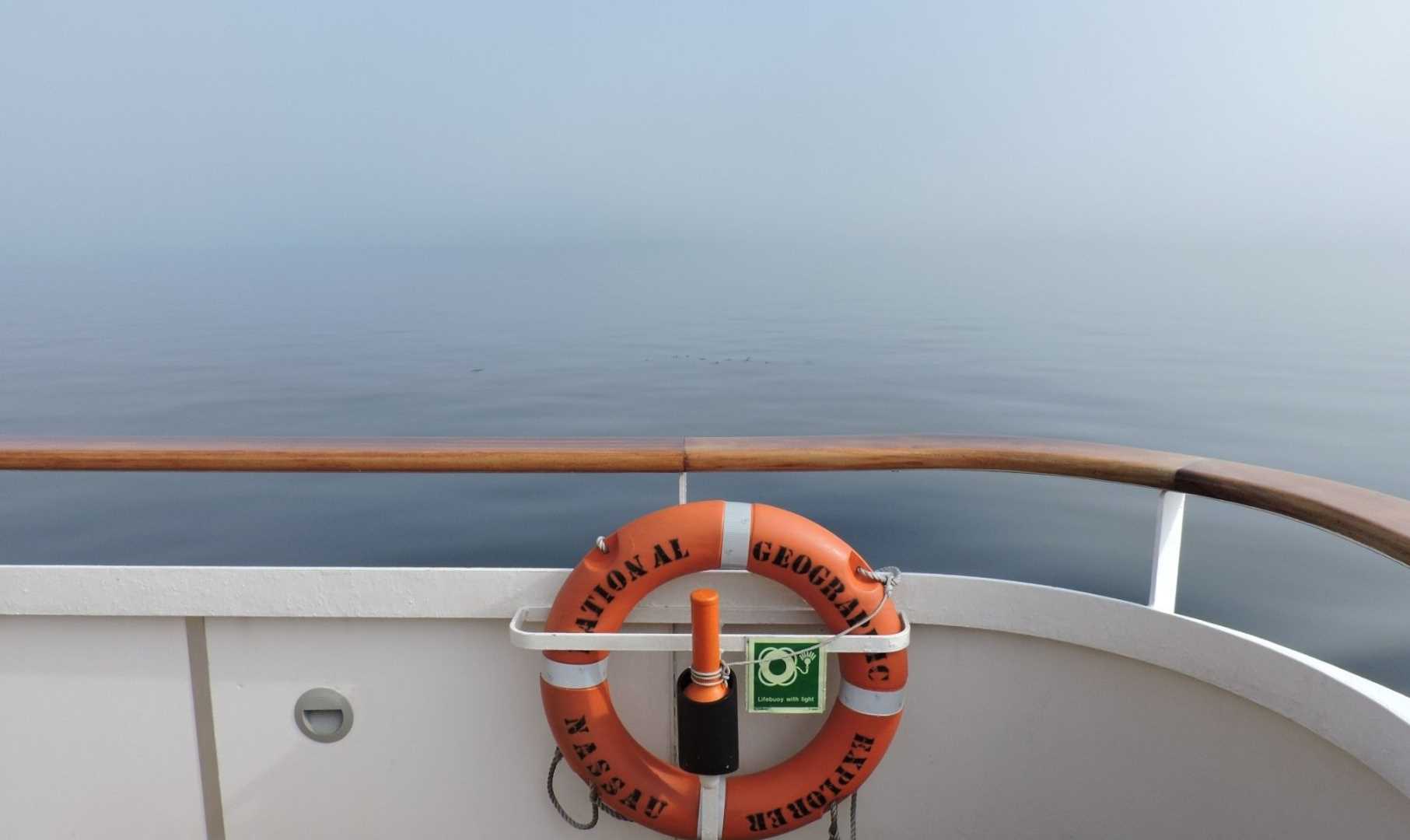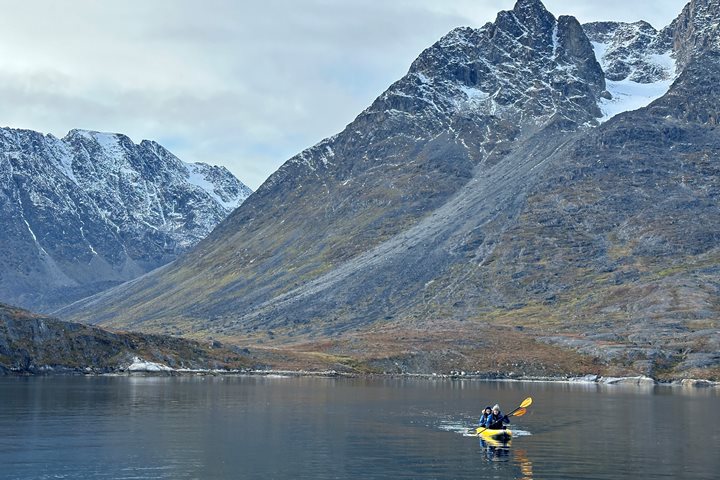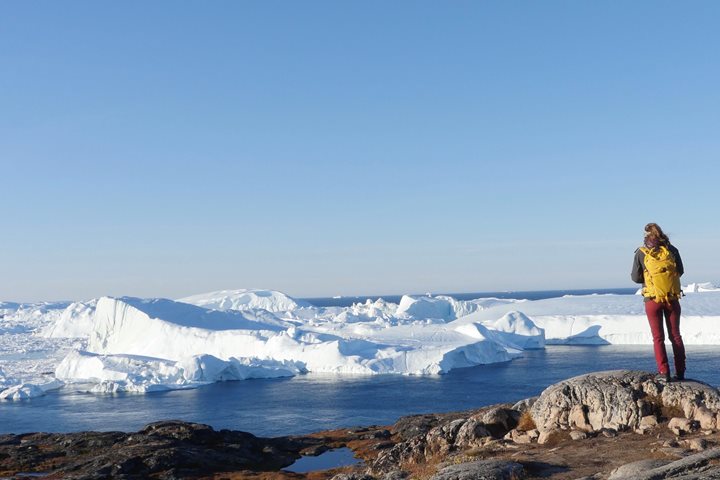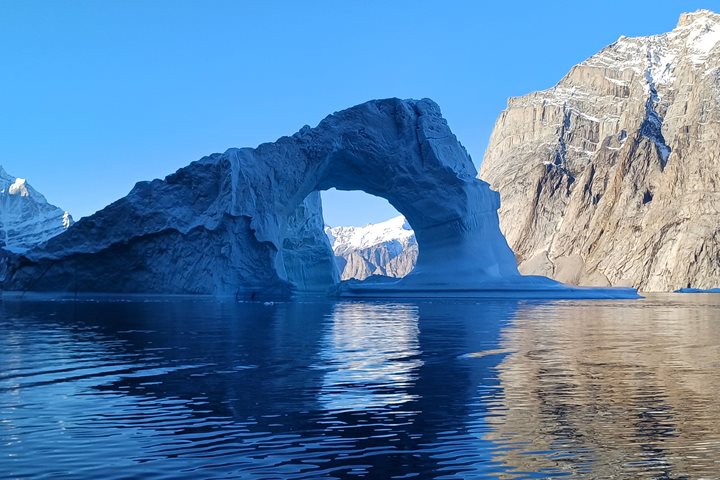National Geographic Explorer spent a beautiful day at sea heading from Greenland towards Baffin Island. This took us across Davis Strait, named for John Davis who discovered this huge waterway while searching for a Northwest Passage route during three expeditions in the 1580s. Our morning in Davis Strait was like sailing in a millpond. Not a ripple could be seen, except for our very regular and symmetrical wake, which spread out behind the ship.
We picked up an impressive following of northern fulmars who were obviously hoping the ships propellers would stir up something of interest, or the crew might dump something edible off the aft deck (which doesn’t happen on this vessel). We were somewhat encumbered with a light fog throughout the morning. It was not too serious, as we could still see a few hundred yards or meters out from the ship, but it was thick enough to hide the horizon. Every now and then we sailed past or through flocks of swimming dovekies, an abundant species of small auk (also known as the little auk in Europe).
We continued with our lecture series today, starting with Doug Gualtieri presenting the basics of bird watching and describing the birds we can expect to see on this voyage. This was followed by Mary Beth Cunha, who told us about the history of navigation and the development of reliable maps and navigation charts. In the afternoon, Eva Aariak, the past premier of Nunavut, told us about the culture and history of her people. In addition, she described the importance of the traditional oil lamp, an ingenious invention that made a great contribution to the success of Inuit. Eva even lit her travelling oil lamp as a demonstration
After lunch, the wind picked up a little – just enough to ruffle up the surface of the sea a tiny bit. Actually, this was good, because it eventually blew away the fog and gave us clear sailing for the later part of the day. At some point, we entered into Baffin Bay, an enormous body of water named for William Baffin, who explored this region in 1616 while searching for the Northwest Passage. Many guests had both fun and frustration while trying to photograph fulmars flying past the ship, but no one had trouble photographing a massive ice berg that we passed during the afternoon tea. For the rest of the day we could see icebergs scattered about off in the distances and everyone went to bed in anticipation of reaching the edge of a large area of sea ice early the next morning.







